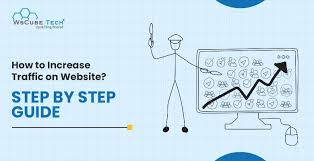Business
7 Top Strategies for Effective Brand Design in Marketing

Brand design is important because it affects how people see and feel about a company’s products or services. When a brand design is done well, it grabs people’s attention and makes them trust and like the brand more. In this article, you’ll find out the seven important ways to make sure your brand design works well in marketing.
1. Define Your Brand Identity
Consider its personality and values, which are the beliefs it stands for. Also, think about your unique selling points (USPs), which are the reasons why customers should choose your brand over others. These ideas are crucial because they shape all aspects of how your brand looks and other materials.
2. Create a Memorable Logo
Make sure your logo is simple and shows what your brand is about. Also, it should be easy to see and understand, even when it’s small or on different devices like phones or computers. This way, it can be everywhere your brand is, making it easier for people to remember and trust your brand.
3. Use Color Psychology
When you choose colors for your brand, think about what your brand is like and what your customers will like. Make sure the colors match how your brand feels and what it stands for. Also, think about how different cultures see colors. Keep using the same colors in all your brand’s things, so people recognize your brand easily.
4. Typography Matters
Some brand design agency choose fonts that are easy to read and match the personality of your brand. The way you write things should make it clear and easy for people to understand what your brand is about. Use different fonts for titles and important points to make things look organized.
5. Consistency is Key
Keep everything about how your brand looks and sounds the same everywhere. This means using the same colors or way of speaking in all your ads or social media. When things look and sound the same all the time, people start to remember your brand better and know what to expect from you.
6. Visual Storytelling
If you use visual storytelling, it can make them feel connected to your brand’s story and what it stands for. Visual storytelling is powerful because it touches people’s emotions and helps them understand and remember your brand better. This emotional connection can strengthen how people feel about your brand and make them more likely to choose your products or services.
7. Adaptability and Flexibility
Make sure your brand’s designs can work well on different places where you advertise, like websites or social media. Also, it should be easy to change a little if needed, but still look like your brand. Keep an eye on what looks good now, but also choose things that won’t get old fast.
Crafting Visual Identity with Your Brand Design!
Effective brand design goes beyond aesthetics; it communicates your brand’s essence and influences consumer perceptions. By implementing these strategies, you can create a strong visual identity that resonates with your target audience, enhances brand recognition, and ultimately drives business growth.

Business
Brightspeed Login: A Comprehensive Guide for Secure Access and Account Management

For those seeking seamless access to Brightspeed’s diverse services, understanding the login process is essential. Brightspeed offers a user-friendly interface that allows customers to manage accounts, access various features, and troubleshoot common login issues. Here, we’ll provide an in-depth guide on the Brightspeed login process and essential tips to manage and secure your account effectively.
What is Brightspeed?
Brightspeed provides high-speed internet, phone, and digital services, allowing customers to connect reliably and enjoy a range of digital tools. Brightspeed’s online portal provides access to essential account management features, billing details, and personalized account settings.
How to Access Your Brightspeed Account
Accessing your Brightspeed account involves a few straightforward steps. Whether you’re a new user setting up your account or an existing customer trying to log in, follow these detailed instructions for a smooth experience.
Step-by-Step Login Instructions for Brightspeed
- Visit the Official Brightspeed Website
- Navigate to the Login Page
Once on the homepage, locate the “Login” button, typically found in the top right corner of the page. Click it to proceed to the login section. - Enter Your Credentials
On the login page, you’ll see fields for your username and password. Enter the credentials associated with your Brightspeed account accurately. - Enable Two-Factor Authentication (Optional)
For added security, Brightspeed offers two-factor authentication (2FA). Enabling 2FA will require an additional security code sent to your email or phone. This step is highly recommended for protecting your account from unauthorized access. - Click the Login Button
After entering your credentials and (if enabled) the 2FA code, click the “Login” button. You should now be redirected to your account dashboard.
Creating a New Brightspeed Account
If you are a new customer or haven’t registered your Brightspeed account yet, you’ll need to go through a quick registration process. Here’s how:
- Go to the Brightspeed Website
Open your browser and visit https://www.brightspeed.com. - Find the Sign-Up Option
Click on the “Sign Up” link located near the login button. This will take you to the registration form. - Fill in Required Information
The form will request essential information, such as your name, email address, phone number, and billing information. - Set Up Your Username and Password
Choose a secure username and create a strong password. Make sure to follow Brightspeed’s password recommendations for better security. - Complete the Verification Process
You may be asked to verify your email or phone number to complete the registration process. Follow the instructions provided to confirm your account.
Recovering Your Brightspeed Login Details
If you’ve forgotten your login credentials, Brightspeed offers several recovery options to regain access.
Resetting a Forgotten Password
- Go to the Login Page
On the Brightspeed login page, look for the “Forgot Password?” link and click on it. - Enter Your Username or Email
Enter the username or email address associated with your account. Brightspeed will use this information to verify your identity. - Follow the Instructions Sent to Your Email
Check your email for a password reset link from Brightspeed. Click the link and follow the instructions to create a new password. - Log In with Your New Password
Once your password is reset, return to the login page and use your new password to access your account.
Retrieving a Forgotten Username
- Click on the “Forgot Username?” Option
In case you forgot your username, select the “Forgot Username?” link available on the login page. - Provide Required Details
You may be asked to provide your registered email address and other identifying information. - Receive Username Information by Email
Brightspeed will send you an email containing your username details. Use it to log in securely.
Troubleshooting Common Login Issues
Experiencing login issues can be frustrating. Here are some common problems and their solutions:
Incorrect Password or Username
Ensure that you are entering the correct username and password. Use the password recovery options above if you’ve forgotten your credentials.
Browser Compatibility Issues
Some browsers may have compatibility issues with the Brightspeed website. Try using an alternative browser or updating your current one to ensure compatibility.
Clearing Browser Cache and Cookies
If the login page isn’t loading correctly, clear your browser’s cache and cookies. This can resolve issues caused by stored data from previous sessions.
Security Settings or Firewall Restrictions
Sometimes, restrictive firewall settings or antivirus programs can block the Brightspeed website. Temporarily disable these security settings, but remember to re-enable them after logging in.
Tips for Securing Your Brightspeed Account
To keep your Brightspeed account safe from unauthorized access, follow these best practices:
Use a Strong, Unique Password
A strong password should include a mix of uppercase and lowercase letters, numbers, and special characters. Avoid using easily guessed information like birthdays or simple number sequences.
Enable Two-Factor Authentication (2FA)
Brightspeed supports 2FA, adding an extra layer of protection by requiring a code in addition to your password. This code is usually sent to your phone or email, making unauthorized access far more difficult.
Keep Your Contact Information Up to Date
Ensure that your email and phone number associated with the account are current. This allows Brightspeed to contact you for any security notifications or recovery needs.
Regularly Monitor Account Activity
Make it a habit to check your account activity periodically. If you notice any unauthorized transactions or suspicious activity, contact Brightspeed support immediately.
Managing Your Brightspeed Account Settings
Brightspeed’s online portal allows you to customize your account settings to suit your preferences. Here’s a look at some of the options available:
Updating Personal Information
Log in to your account and navigate to the “Account Settings” section. Here, you can update personal information, including your contact details, billing address, and communication preferences.
Billing and Payment Management
Access your billing history and make payments directly through your account dashboard. You can set up automatic payments or update your payment method for convenience.
Notification Preferences
Brightspeed provides options for setting up notifications and alerts. Customize these settings to receive important updates on billing, account security, and service disruptions.
Conclusion
Understanding the Brightspeed login process is essential for secure and efficient access to their services. By following these steps, tips, and troubleshooting methods, you can confidently manage your Brightspeed account, handle login issues, and secure your data. Brightspeed’s user-centric design makes it easy to navigate the platform, offering a seamless experience for all users.
Frequently Asked Questions About Brightspeed Login
Why Can’t I Log Into My Brightspeed Account?
If you’re having trouble logging in, check for common issues like incorrect password entry, expired login sessions, or browser compatibility. If issues persist, contact Brightspeed support for further assistance.
Is Brightspeed’s Online Portal Secure?
Yes, Brightspeed uses robust encryption and security protocols to protect user data and ensure safe access to their online portal. Enabling two-factor authentication adds an additional layer of security.
How Can I Recover My Brightspeed Password?
To reset your password, go to the Brightspeed login page and select the “Forgot Password?” option. Follow the instructions sent to your email to complete the password reset process.
Business
Custom Patches: Your Brand’s Secret Weapon

Table of Contents
- Introduction to Custom Patches
- Why Custom Patches Are Popular
- Benefits of Custom Patches for Your Brand
- Types of Custom Patches
- Designing Your Custom Patch
- The Future of Custom Patches in Branding
- How to Choose the Right Supplier
- Conclusion and Final Thoughts
Introduction to Custom Patches
In an ever-competitive marketplace, brands constantly seek unique methods to stand out and capture consumer attention. Enter custom patches—a subtle yet powerful branding tool making waves across various industries. With the capability to convey distinct brand identity, imbue products with perceived value, and signify quality, custom embroidery patches transcend their status as mere ornamental add-ons. They represent a fusion of creativity, durability, and attention to detail, qualities that are vital for any successful brand seeking to make a mark.
Beyond aesthetics, custom patches serve as an intimate expression of individuality and affiliation. Whether featured on team uniforms, corporate giveaways, or branded merchandise, they add a personal touch that resonates with wearers. As customization continues to trend, reflecting a broader desire for unique self-expression, the demand for these versatile embellishments has surged.
Why Custom Patches Are Popular
The resurgence of custom patches can be attributed to a blend of nostalgia and modern-day relevancy. They embody the desire for personalization and distinctiveness as part of fashion and lifestyle trends. The fashion industry has embraced patches, incorporating them into collections to create eclectic and customizable pieces. Consumers gravitate towards patches as they offer a means to express individuality and tell a story without words. The cultural significance of patches plays a critical role, reviving their popularity among newer generations seeking to bridge past styles with contemporary fashion.
Benefits of Custom Patches for Your Brand
Custom patches offer manifold advantages, making them an invaluable asset for brands. Firstly, custom patches act as powerful symbols of brand identity, allowing businesses to communicate their core values and distinguish themselves from competitors. Their durability is another distinct advantage; crafted from materials designed to withstand wear and tear, they maintain their visual appeal and structural integrity over time, offering longevity that rivals other promotional materials. Custom patches are a cost-effective branding solution, offering high-value impact without the hefty price tag. Their affordability allows small businesses and startups to invest in quality branding without financial strain.
Types of Custom Patches
Custom patches come in a stunning array of styles, each offering unique features suited for different applications:
- Embroidered Patches: Known for their classic look, embroidered patches are ideal for intricate designs and vibrant colors. Their texture brings depth to logos and images, making them a favored choice for traditional and stylish appeal.
- Woven Patches: These patches allow for incredibly fine detail, making them perfect for intricate designs that demand precision. They offer a smoother finish than their embroidered counterparts, presenting a sophisticated artwork representation.
- PVC Patches: Made from durable and weather-resistant materials, PVC patches are great for outdoor gear and uniforms. Their flexibility and robustness make them suitable for applications that require resilience against the elements.
- Heat Transfer Patches: Popular for their ease of application, heat transfer patches allow for high-volume production. They are commonly used on apparel where a swift and secure attachment is needed. They are ideal for temporary promotions and limited-edition products.
Designing Your Custom Patch
Designing a custom patch is both a creative endeavor and a strategic exercise. Begin by crystallizing your brand’s core message and translating it into a compelling visual emblem. The choice of color, shape, and size should align with the brand’s identity and market goals. Furthermore, it is essential to understand the psychological impact of colors, as they can influence viewer perception and emotional response to your brand. Harmonizing these elements with user preferences can create a standout design that resonates with your target audience.
The Future of Custom Patches in Branding
Looking ahead, technological advancements are set to spur custom patches to take on even more exciting roles in branding. Innovative integrations like smart patches featuring QR codes or NFC chips could transform traditional patches into interactive experiences, allowing brands to engage audiences in novel ways. These advancements offer new possibilities for storytelling, data sharing, and customer interaction, enhancing brand narratives and building deeper connections with consumers.
How to Choose the Right Supplier
Choosing the right supplier for custom patches is crucial to realizing your design vision effectively. A quality supplier should offer various customization options, be transparent about their production processes, and provide reliable customer service. Additionally, assessing their material quality, production timelines, and previous works will help ensure you partner with a supplier capable of meeting your brand’s needs and upholding its standards. Selecting a trusted partner results in a seamless collaborative process that brings your unique patch concepts to fruition.
Conclusion and Final Thoughts
Incorporating custom patches into your brand strategy offers a unique avenue for distinguishing your brand in a crowded market. From enhancing visibility and recognition to fostering customer engagement, patches are a versatile branding tool that complements established and emerging brands. As the landscape continues to change, custom patches provide an accessible and impactful way to articulate brand stories and values, ensuring your brand remains memorable and distinct in the minds of consumers.
Business
The Complete Guide to Boosting Website Traffic with SEO

Why SEO is Critical for Your Online Success
The foundation of any digital marketing strategy is effective SEO. When done correctly, SEO can lead to higher rankings on Google, more clicks, and ultimately more conversions. As search engines continue to evolve their algorithms, SEO strategies must also adapt to ensure you are not left behind. Let’s delve into the key reasons why SEO is critical:
- Increased Visibility: By optimizing your content, your website becomes more visible to search engine crawlers, increasing the likelihood of being displayed in top search results.
- Credibility and Trust: High-ranking websites are often seen as more credible and trustworthy by users.
- Targeted Traffic: SEO helps you attract the right kind of visitors by focusing on keywords that reflect user intent.
Understanding Search Engine Algorithms
Search engines like Google use sophisticated algorithms to rank websites based on relevance, quality, and usability. Google’s algorithm is updated frequently, making it essential for SEO professionals to stay informed about the latest changes. Major factors that affect SEO rankings include:
- Keywords: Search engines analyze keywords within the content to determine its relevance to user queries.
- Backlinks: High-quality backlinks from reputable sites signal that your website is a trusted resource.
- On-Page Optimization: Factors like title tags, meta descriptions, and alt text for images are all key for proper optimization.
- Page Speed: Websites that load quickly provide a better user experience, which is now a ranking factor.
Effective Keyword Research for SEO Success
Effective SEO begins with thorough keyword research. By understanding the keywords that your target audience is searching for, you can create content that meets their needs while also aligning with search engine algorithms.
Long-Tail Keywords
Focusing on long-tail keywords—phrases that are longer and more specific—can help your content rank for highly targeted queries. Long-tail keywords are less competitive and have higher conversion rates because they match the searcher’s intent more accurately.
Competitor Keyword Analysis
One of the most effective ways to find keyword opportunities is to analyze your competitors. By using tools such as SEMrush or Ahrefs, you can identify the keywords that are driving traffic to their websites and incorporate them into your SEO strategy.
On-Page SEO: Optimizing Your Website for Better Rankings
On-page SEO involves optimizing individual pages of your website to rank higher in search engines and earn more relevant traffic. Here are some critical on-page factors to focus on:
Title Tags and Meta Descriptions
Each page should have a unique and descriptive title tag that includes your primary keyword. Title tags should be under 60 characters to ensure they are fully visible in search results. Meta descriptions, while not directly a ranking factor, play a crucial role in influencing the click-through rate (CTR) from search engine result pages.
Headings and Subheadings
Use headings (H1, H2, H3) to structure your content. Including keywords in your headings helps search engines understand the main topics of your page and improves readability for users.
Content Optimization
Ensure that your content is high-quality, informative, and keyword-rich. Google favors websites that offer valuable and original content over those that engage in keyword stuffing. Focus on delivering content that answers your users’ questions and keeps them engaged.
- Use internal links to guide users to related pages on your site, improving their experience and boosting your SEO.
- Alt text for images is essential for accessibility and SEO. Include descriptive, keyword-rich alt text for every image on your website.
Mobile Optimization
With mobile devices accounting for the majority of web traffic, having a mobile-optimized website is critical. Google uses mobile-first indexing, which means the mobile version of your site is considered the primary version. Ensuring your website is mobile-friendly is essential for SEO success.
Off-Page SEO: Building Authority and Trust
Off-page SEO refers to actions taken outside of your website to improve your rankings. Building high-quality backlinks, increasing social signals, and enhancing your brand reputation are some of the most effective off-page SEO techniques.
Backlink Building
One of the most important ranking factors is the number and quality of backlinks pointing to your site. High-quality backlinks signal to search engines that your site is trustworthy and authoritative.
- Guest Blogging: Writing guest posts for reputable blogs in your niche is an excellent way to build backlinks and expose your brand to a new audience.
- Content Sharing: Promote your content on social media platforms to increase visibility and attract backlinks.
- Directory Submissions: Submitting your website to relevant online directories can provide additional backlinks and increase your site’s visibility.
Brand Mentions
Even if a website doesn’t directly link to you, brand mentions can have a positive impact on SEO. The more people talk about your brand online, the more authoritative your website becomes in the eyes of search engines.
Technical SEO: Optimizing the Behind-the-Scenes Factors
Technical SEO involves optimizing your website’s technical aspects to ensure it can be crawled and indexed by search engines. Technical SEO is often overlooked, but it plays a critical role in achieving top rankings.
Site Architecture and URLs
Ensure your website’s structure is logical and easy to navigate. Search engines favor sites with a clear hierarchy and a simple URL structure. Avoid lengthy or complex URLs, and include relevant keywords where appropriate.
Sitemap and Robots.txt
A sitemap helps search engines index your website more efficiently by providing a list of all your pages. Similarly, the robots.txt file tells search engines which pages of your site they can and cannot crawl.
Page Speed Optimization
Page speed is a crucial ranking factor. Use tools like Google PageSpeed Insights to test your site’s speed and identify areas for improvement. Consider compressing images, minimizing HTTP requests, and leveraging browser caching to enhance load times.
SSL and Security
Ensure your website is secure by implementing SSL encryption. Websites with HTTPS are preferred by Google and offer users a safer browsing experience. An SSL certificate is essential for building trust with your visitors and improving your SEO performance.
Conclusion
Mastering SEO is not an overnight task, but with the right strategies, you can dramatically increase your website traffic and outrank your competitors. Focus on creating high-quality content, optimizing your site for search engines, and building authoritative backlinks to secure a top spot in search results. As search engines continue to evolve, so too should your SEO tactics.
H6: FAQs about Cmhiyet
1. What is Cmhiyet?
Cmhiyet is a social and philosophical concept that emphasizes collective welfare, community responsibility, and ethical living.
2. Where did Cmhiyet originate?
The concept has roots in ancient civilizations and has evolved through history, particularly during the Middle Ages.
3. How is Cmhiyet applied in modern society?
Cmhiyet influences various aspects of modern life, including political systems, education, and social movements.
4. What are the main criticisms of Cmhiyet?
Critics argue that it can suppress individual freedoms and creativity, though proponents counter these points.
5. Who are some major figures associated with Cmhiyet?
Notable figures include Plato, Confucius, Gandhi, and Martin Luther King Jr.
6. How does Cmhiyet compare to other governance systems?
Cmhiyet emphasizes collective welfare over individual success, contrasting with systems like capitalism.
Business
The Ultimate Guide to Boosting Your Website’s SEO and Driving Organic Traffic

Introduction
Search Engine Optimization (SEO) has become an essential tool for any business looking to establish a strong digital presence. A well-optimized website doesn’t just drive traffic—it converts visitors into customers. In this article, we will provide a comprehensive guide on how to improve your website’s SEO and rank higher on Google. We will cover on-page, off-page, and technical SEO tactics that can significantly impact your website’s search engine rankings. By implementing these strategies, you can achieve a consistent flow of organic traffic that boosts your brand visibility and profitability.
1. Understanding the Fundamentals of SEO
What is SEO?
SEO, or Search Engine Optimization, is the process of optimizing your website to enhance its visibility on search engines like Google, Bing, and Yahoo. This includes both on-page SEO (improving content and site structure) and off-page SEO (gaining backlinks and social media engagement).
Why is SEO Important?
High-ranking positions on search engine results pages (SERPs) can bring significant organic traffic to your website, reduce your dependency on paid ads, and establish your authority in your niche.
2. Keyword Research: The Cornerstone of Effective SEO
Keyword research is the first step in developing an effective SEO strategy. By identifying the right keywords, you can align your content with what your audience is actively searching for.
Choosing the Right Keywords
Use tools like Google Keyword Planner, Ahrefs, and SEMrush to identify keywords that have high search volume and low competition. Focus on long-tail keywords, as these often have higher intent and are easier to rank for. For example, instead of targeting “shoes,” consider targeting “best running shoes for marathon training.”
Analyzing Competitor Keywords
Analyze your competitors to see what keywords they are ranking for. Use tools like Ahrefs Site Explorer to understand which keywords are bringing the most traffic to their sites, and create content that is more valuable and informative.
3. On-Page SEO: Optimizing Your Content for Search Engines
On-page SEO refers to the optimization of individual pages to rank higher in SERPs and earn more relevant traffic.
Optimizing Title Tags and Meta Descriptions
Title tags and meta descriptions are the first things users see in search results. Ensure that your title tag is under 60 characters and includes your main keyword. Your meta description should be compelling, under 160 characters, and encourage users to click through to your website.
Using Header Tags Effectively
Break your content into sections using header tags (H1, H2, H3, etc.). The H1 tag should include your main keyword, while H2 and H3 tags should feature related keywords. This structure makes your content more readable and helps search engines understand the context.
Creating High-Quality Content
Content quality is the backbone of SEO. Create informative, unique, and valuable content that answers the queries of your target audience. Use a mix of text, images, and videos to engage users. Aim for longer content—typically over 1,000 words—as it tends to perform better in SERPs.
Image Optimization
Images can improve user engagement and contribute to better SEO performance. Use high-quality images, compress them to reduce loading time, and include alt text with relevant keywords to help search engines understand what your images depict.
4. Off-Page SEO: Building Authority with Backlinks
Off-page SEO involves activities outside your website that impact your rankings.
The Importance of Backlinks
Backlinks are one of the most important ranking factors. When reputable sites link back to your content, it signals to search engines that your site is trustworthy and authoritative.
Strategies for Earning Quality Backlinks
- Guest Posting: Write valuable content for other sites in your industry and include a link back to your website.
- Outreach: Contact website owners and bloggers in your niche to see if they would be willing to link to your content.
- Broken Link Building: Find broken links on other websites and suggest your content as a replacement.
Social Media and SEO
While social media signals don’t directly impact SEO, sharing your content on platforms like LinkedIn, Facebook, and Twitter can increase its visibility and potentially attract more backlinks.
5. Technical SEO: Ensuring a Smooth User Experience
Technical SEO ensures that your website is easily crawlable and indexable by search engines.
Improving Site Speed
Site speed is a crucial ranking factor. Use tools like Google PageSpeed Insights to identify issues that may be slowing down your site. Compress images, minimize CSS and JavaScript files, and leverage browser caching.
Mobile-Friendliness
With the majority of users accessing the web via mobile devices, having a mobile-friendly website is non-negotiable. Use responsive design and ensure that your site is easy to navigate on smaller screens.
Fixing Crawl Errors
Crawl errors can prevent search engines from indexing your content. Use tools like Google Search Console to identify and fix issues such as broken links, missing pages, and server errors.
Implementing Structured Data
Structured data helps search engines understand your content better and can lead to enhanced results, such as rich snippets. Use schema markup to highlight elements like reviews, ratings, and product information.
6. Local SEO: Optimizing for Local Search
If your business serves a specific geographical area, local SEO is vital. Optimize your Google My Business profile, ensure that your name, address, and phone number (NAP) are consistent across all directories, and collect customer reviews to improve your local ranking.
Creating Local Content
Create content tailored to your local audience. This can include blog posts on local events, news, or case studies featuring local customers.
7. Measuring Success: Key SEO Metrics to Track
To evaluate the effectiveness of your SEO efforts, it’s important to track key metrics.
Organic Traffic
Monitor the amount of organic traffic coming to your site using tools like Google Analytics. This helps you understand if your SEO efforts are attracting more visitors over time.
Keyword Rankings
Use tools like Ahrefs or SEMrush to track how your keywords are performing. This can help you identify which keywords are driving the most traffic and where improvements are needed.
Bounce Rate and Dwell Time
A high bounce rate or low dwell time can indicate that your content isn’t resonating with your audience. Analyze these metrics to identify pages that may need more engaging content or a better structure.
Conclusion
In conclusion, $aoe300x is a dynamic and versatile technology that offers significant benefits across industries. Understanding its potential and effectively implementing it can lead to substantial gains in productivity and efficiency.
Frequently Asked Questions (FAQs) on $aoe300x
- What industries benefit most from $aoe300x?
- Healthcare, manufacturing, and IT are some of the key beneficiaries.
- Is $aoe300x suitable for small businesses?
- Yes, with proper scaling, $aoe300x can be tailored to fit smaller organizations.
- How does $aoe300x integrate with existing systems?
- Through APIs and custom connectors, $aoe300x can integrate seamlessly.
- What are the maintenance requirements for $aoe300x?
- Regular updates and monitoring are essential for optimal performance.
- Can $aoe300x be customized to fit specific needs?
- Yes, $aoe300x is highly customizable to meet unique business requirements.
- How does $aoe300x handle data security and privacy?
- Advanced encryption and secure data management protocols ensure data security.
Business
The Ultimate Guide to Boosting Your Website’s Traffic

In today’s digital age, having a robust online presence is crucial for any business or individual aiming for success. Generating high-quality traffic to your website isn’t just about creating appealing content but also optimizing your site for search engines, utilizing effective marketing strategies, and staying updated with industry trends. This guide aims to provide you with comprehensive insights and actionable steps to help you skyrocket your website’s visibility and traffic.
1. Understanding Website Traffic: Quality Over Quantity
When it comes to website traffic, many fall into the trap of focusing solely on increasing the number of visitors. However, it’s essential to understand that not all traffic is created equal. High-quality traffic consists of visitors genuinely interested in your content, products, or services. These users are more likely to engage, convert, and return to your site.
How to Measure Quality Traffic: Key Metrics
To evaluate the quality of your traffic, consider these metrics:
- Bounce Rate: The percentage of visitors who leave your site after viewing only one page. A high bounce rate might indicate that your content isn’t resonating with your audience.
- Time on Page: Measures how long visitors stay on a page. Longer durations suggest that users are finding your content valuable.
- Conversion Rate: The percentage of visitors who take a desired action, such as signing up for a newsletter or making a purchase.
2. Leveraging SEO to Increase Organic Traffic
Search Engine Optimization (SEO) is a fundamental strategy for driving organic traffic to your website. By optimizing your site for search engines, you improve its visibility on search engine results pages (SERPs), making it easier for users to find you.
2.1 On-Page SEO: Optimizing Your Content
On-page SEO involves making sure that every element on your webpage is optimized. This includes:
- Title Tags and Meta Descriptions: Your title tag should be concise yet descriptive, with primary keywords placed at the beginning. Meta descriptions should summarize the content and include relevant keywords.
- Header Tags (H1, H2, H3, etc.): Use these to structure your content. Ensure each section is clearly defined and easy to read.
- Keyword Optimization: Incorporate relevant keywords naturally throughout your content. Avoid keyword stuffing as it can hurt your ranking.
- Internal Linking: Link to other relevant content on your site to keep visitors engaged and guide them to further information.
2.2 Off-Page SEO: Building Authority
Off-page SEO involves actions outside your website that impact your rankings. The most crucial aspect here is backlink building:
- Guest Blogging: Write quality content for reputable sites in your niche and include links back to your website.
- Social Media Engagement: Promote your content on social media platforms to increase visibility and encourage sharing.
- Influencer Partnerships: Collaborate with influencers who can promote your site to their followers, driving traffic and building credibility.
2.3 Technical SEO: Enhancing Site Performance
Technical SEO ensures that your website meets the technical requirements of search engines. Key elements include:
- Site Speed Optimization: Faster-loading sites rank higher on Google. Compress images, use caching, and minimize JavaScript to speed up your site.
- Mobile-Friendliness: Ensure your site is responsive and provides an excellent user experience on mobile devices.
- XML Sitemaps: Help search engines understand your site’s structure by creating and submitting XML sitemaps.
3. Creating Engaging Content That Attracts Traffic
Content is king—but only if it’s engaging, informative, and valuable. Your content strategy should focus on creating content that your target audience is actively searching for.
3.1 Blogging: A Powerful Tool
Regularly publishing blog posts allows you to target a variety of keywords, showcase your expertise, and attract a broader audience. Use the following strategies:
- Focus on Long-Tail Keywords: These are specific phrases that users type when they’re looking for particular information. They may have lower search volumes but typically bring in higher-quality traffic.
- Incorporate Visuals: Use images, infographics, and videos to break up text and keep readers engaged.
- Provide Actionable Insights: Offer tips, tutorials, or case studies that readers can implement immediately.
3.2 Evergreen Content: Driving Long-Term Traffic
Evergreen content remains relevant and valuable over time. Examples include “how-to” guides, FAQs, and industry glossaries. Regularly update your evergreen content to ensure it stays accurate and maintains its ranking potential.
4. Utilizing Social Media to Drive Traffic
Social media platforms are powerful tools for driving traffic to your website. Whether it’s Facebook, Instagram, LinkedIn, or Twitter, having an active presence can help you reach a broader audience.
4.1 Choosing the Right Platform
Each platform has its strengths. For example, LinkedIn is ideal for B2B marketing, while Instagram works well for visual-centric industries like fashion or design. Choose platforms where your target audience is most active.
4.2 Creating Shareable Content
Posts that are informative, entertaining, or inspirational are more likely to be shared. Include social sharing buttons on your blog posts and encourage readers to share your content.
4.3 Paid Social Advertising
If you have the budget, consider running targeted ads on social media platforms. Ads can help boost visibility and attract a more focused audience to your website.
5. Email Marketing: Building a Loyal Audience
Email marketing allows you to nurture relationships with your audience, providing them with valuable content and keeping them engaged. Use the following strategies to maximize your email marketing efforts:
- Segment Your Audience: Group subscribers based on their preferences or past interactions with your site. This enables you to send personalized content that resonates with each group.
- Craft Compelling Subject Lines: Your subject line is the first thing recipients see, so make it attention-grabbing.
- Include Clear CTAs: Every email should have a clear call-to-action that encourages readers to visit your site.
6. Analytics and Continuous Optimization
Tracking your traffic and optimizing based on data is crucial. Use tools like Google Analytics to monitor performance and identify areas for improvement.
6.1 Analyzing User Behavior
- Identify Popular Pages: See which pages are getting the most traffic and understand what makes them successful.
- Analyze Traffic Sources: Determine where your traffic is coming from (e.g., search engines, social media, referrals) and focus your efforts on the most effective channels.
6.2 A/B Testing for Optimization
Perform A/B testing to find out what works best for your audience. Test different headlines, images, CTAs, or even content formats to optimize your pages for maximum engagement and conversions.
. Conclusion
Gidler represents a powerful tool in the modern technological landscape, offering a range of benefits that drive business success. Its future potential is immense, particularly in the realms of AI and automation. As businesses continue to adopt and adapt to Gidler, it is set to become an indispensable component of digital transformation strategies.
FAQs on Gidler
- What is Gidler and how is it used? Gidler is a technology platform used to optimize processes and enhance efficiency across various industries. It is used for data management, automation, and more.
- What are the advantages of Gidler over traditional technologies? Gidler offers greater flexibility, scalability, and ease of integration, making it superior to traditional systems in many aspects.
- Can Gidler be integrated into AI systems? Yes, Gidler is designed to work seamlessly with AI and automation systems, enhancing their functionality.
- What are the key challenges in implementing Gidler? Common challenges include compatibility with existing systems and high initial costs.
- How does Gidler contribute to business growth? Gidler improves operational efficiency and decision-making, leading to higher profitability.
- Is Gidler suitable for small businesses? Absolutely. Gidler can be scaled to meet the needs of small and medium-sized businesses as well.
Business
Understanding the Webcord Virus: A Comprehensive Guide

What is the Webcord Virus?
The Webcord Virus is a newly discovered malware variant that primarily targets web-based communication platforms, specifically those used for messaging and file sharing. Its malicious capabilities are designed to infiltrate systems, disrupt communications, and steal sensitive data without the user’s knowledge. Like many other modern cyber threats, the Webcord Virus is adept at spreading across networks, making it particularly dangerous in organizational environments where secure communication is vital.
How Does the Webcord Virus Work?
The Webcord Virus operates by embedding itself in a system once a user unknowingly interacts with an infected link or file. This type of malware often comes disguised as a legitimate update, plugin, or downloadable file on communication platforms. Once inside the system, it begins its covert operation by:
- Gaining unauthorized access: It infiltrates the system by exploiting vulnerabilities in communication tools or weak security protocols.
- Spreading through networks: Once it establishes a presence on the initial device, the virus can propagate to connected devices within the same network, effectively multiplying its reach.
- Stealing data: The Webcord Virus often focuses on collecting personal data, sensitive information, or even corporate communications. It can scan through messages, emails, and files to retrieve confidential content.
- Disrupting communication platforms: In more aggressive attacks, the virus may actively interfere with the platform’s functionality, causing slowdowns, failures, or total shutdowns.
Symptoms of a Webcord Virus Infection
Knowing the signs of a Webcord Virus infection is crucial to mitigate damage before it worsens. Some of the most common symptoms include:
- Unexpected Slowdowns: One of the first signs is a significant drop in performance, especially when using web-based communication tools.
- Unusual Error Messages: Users might experience error messages that seem unprovoked or repetitive, especially when trying to send messages or access files.
- Unauthorized Access Attempts: Frequent security alerts or login attempts from unrecognized sources could indicate that the virus is attempting to access your account or system.
- Data Breaches or Leaks: Sudden exposure of confidential information, such as passwords, private conversations, or files, could be a direct result of Webcord Virus activity.
- Unexplained System Behavior: Random crashes, sudden reboots, or abnormal system activities may also be linked to this malware.
How the Webcord Virus Spreads
The Webcord Virus often spreads through various entry points, making it versatile in how it infects systems. Some of the most common methods include:
Phishing Attacks
The virus may infiltrate a user’s device via phishing emails or messages. These communications typically contain a malicious link or attachment disguised as a legitimate update or important file. Once clicked, the malware initiates its attack by embedding itself into the system.
Infected File Downloads
Another major route for the virus is through file sharing. Users who download infected files from insecure or compromised sources may unknowingly introduce the virus into their system. These files can be disguised as documents, media files, or even software updates.
Software Vulnerabilities
The Webcord Virus takes advantage of outdated software or unpatched vulnerabilities in communication platforms. If users do not regularly update their communication tools, they could expose themselves to attack vectors that allow the virus to slip through unnoticed.
Shared Networks
In environments where multiple devices share a network, the virus can move from one infected device to another seamlessly. This is particularly problematic for businesses or institutions where network security might not be robust enough to prevent such spread.
The Impact of the Webcord Virus on Businesses
For organizations, the Webcord Virus presents a significant cybersecurity risk. As communication is the backbone of any business, disruptions caused by the virus can have far-reaching consequences:
Data Loss
One of the most immediate dangers of the Webcord Virus is the potential for data breaches. As it infiltrates communication platforms, the virus can siphon off sensitive corporate information, intellectual property, and private communications. This leads to not only a loss of data but also breaches of confidentiality that could harm a business’s reputation.
Financial Losses
Data breaches caused by the Webcord Virus can result in significant financial penalties. Companies may face fines due to violations of privacy regulations like the GDPR or the California Consumer Privacy Act (CCPA). Additionally, the cost of remediation, legal fees, and recovery efforts can quickly add up.
Operational Downtime
When communication tools are compromised, business operations may grind to a halt. Companies rely heavily on digital platforms to coordinate projects, communicate with clients, and manage internal workflows. Any disruption can result in delays, loss of productivity, and an overall reduction in operational efficiency.
Reputational Damage
Perhaps the most lasting consequence of a Webcord Virus attack is damage to a company’s reputation. Once word spreads that a business has been compromised, it can lose the trust of its clients, partners, and stakeholders. This is especially true if sensitive information related to clients or partners is leaked during the attack.
How to Prevent and Protect Against the Webcord Virus
Effective prevention strategies are critical in defending against the Webcord Virus. Here are some essential methods for safeguarding your system:
Regular Software Updates
Always ensure that your communication platforms and software are kept up to date with the latest security patches. These updates often contain fixes for vulnerabilities that malware like the Webcord Virus can exploit.
Strong Password Protocols
Use strong, unique passwords for all accounts associated with communication platforms. Implement two-factor authentication (2FA) wherever possible to provide an extra layer of security.
Employee Training
Train employees to recognize phishing attempts and suspicious emails. Educating staff on the risks and tactics used by cybercriminals can significantly reduce the likelihood of a virus infection.
Utilize Advanced Security Tools
Invest in comprehensive security solutions, including anti-virus software, firewalls, and intrusion detection systems. These tools can help monitor network traffic for suspicious activity and automatically quarantine threats before they escalate.
Regular Backups
In case of an infection, it’s crucial to have a recent backup of all important data. This will allow you to restore systems to a pre-infected state without losing significant amounts of information.
What to Do if You’ve Been Infected
If you suspect that your system has been infected by the Webcord Virus, take immediate action to contain the damage:
- Disconnect from the network to prevent further spread of the virus to other devices.
- Run a full antivirus scan using up-to-date security software.
- Quarantine or delete the infected files.
- Change all passwords and enable two-factor authentication on all accounts connected to the affected system.
- Consult cybersecurity experts for a more thorough assessment and remediation plan.
Conclusion: How to Stay Protected from Webcord Virus
15.1 Key Takeaways
The Webcord Virus is a serious threat to individuals and businesses alike. To stay protected, it is crucial to implement strong security measures,
FAQs about Webcord Virus
H3: What devices are most vulnerable to Webcord virus?
Any device connected to the internet can be vulnerable, especially those with outdated software and weak security settings. Smartphones, laptops, and even smart home devices are at risk.
H3: Can antivirus software completely protect against Webcord?
While antivirus software can offer significant protection, no solution is 100% foolproof. Regular updates and safe browsing habits are essential.
H3: How can I check if my system is infected with Webcord?
You can check for signs of infection by monitoring system performance, reviewing recent file downloads, and using antivirus software to scan for threats.
H3: What should I do if I am infected by the Webcord virus?
Immediately disconnect from the internet, run a full system scan using antivirus software, and follow the removal instructions provided. You may also want to back up important data before taking any action.
H3: How do I remove the Webcord virus manually?
Manual removal requires identifying and stopping suspicious processes in your system’s task manager. For most users, antivirus tools are a safer option.
H3: How can businesses safeguard against Webcord virus attacks?
Businesses can protect themselves by implementing strict security protocols, updating software regularly, and training employees on cybersecurity best practices.
Business
How to Effectively Manage a Bar: Essential Tips and Strategies

Key Takeaways
- Understanding the basics of bar management
- Practical strategies for staffing your bar
- Importance of creating a memorable atmosphere
- Tips for ensuring your bar’s financial health
- Maintaining regulatory compliance
- Implementing marketing strategies to attract customers
Table of Contents
- Understanding Bar Management
- Effective Staffing and Training
- Creating a Memorable Atmosphere
- Ensuring Your Bar’s Financial Health
- Maintaining Regulatory Compliance
- Implementing Marketing Strategies
Understanding Bar Management
Managing a bar is much more than just serving drinks. It involves overseeing daily operations, ensuring customer satisfaction, and maintaining financial stability. A well-managed bar runs smoothly, offers a consistent experience, and becomes a favorite spot for regular patrons.
The first step toward effective bar management is creating a comprehensive plan. This plan should cover everything from menu design and pricing strategies to customer service protocols and employee training programs. By having a thorough plan, you can streamline operations, ensure consistency in service standards, and have a roadmap for measuring progress and improvement. Additionally, having a well-thought-out plan can help you foresee potential challenges and prepare for them accordingly.
Effective Staffing and Training
One of the most crucial aspects of bar management is staffing. The right staff can make or break your bar. Whether you’re figuring out how to get an alcohol permit in Dallas TX or setting up your inventory system, bar managers must be well-equipped with industry knowledge and practical management skills. Hiring experienced staff and providing them with proper training significantly impacts the bar’s reputation and customer satisfaction. When looking for employees, prioritize those who have the relevant experience and fit well with your bar’s culture and values. Staff members who align with your vision for the bar will likely be more motivated and personable.
Training Tips
- Conduct regular training sessions to update staff on new products and service techniques. This ensures everyone is on the same page and can deliver a consistent experience.
- Host team-building activities to foster a positive work environment and enhance team chemistry. A cohesive team functions more smoothly and can handle the stresses of a busy night better.
- Encourage open communication among staff to swiftly address any issues that arise. Open dialogue helps resolve conflicts quickly and maintain a friendly work atmosphere.
Creating a Memorable Atmosphere
The ambience of your bar has the power to greatly impact the customer’s experience and convert newcomers into regulars. By investing in distinct décor, lighting, and music, you can establish a friendly atmosphere that promotes customers coming back. Adding unique elements like themed nights, special events, or live music can differentiate your bar from competitors and leave a lasting impression on customers.
An appealing atmosphere goes beyond the aesthetics. It involves creating an overall experience that makes your bar a desirable place to be. From friendly staff interactions to the ambiance created by your music choices, every detail contributes to the overall atmosphere of your bar. For example, consider the impact of having a signature cocktail menu tailored to your clientele’s preferences or rotating local art displays to keep the visual environment fresh and engaging.
Ensuring Your Bar’s Financial Health
Keeping tabs on your bar’s finances is fundamental to its success. Implementing a reliable point-of-sale system, regularly reviewing financial statements, and controlling inventory can help you keep your costs in check and boost profitability. Tracking key performance indicators (KPIs) like average revenue per customer and inventory turnover can also provide valuable insights into your bar’s financial health.
Financial Tips
- Monitor bar sales and expenses weekly to stay on top of financial health. Regular reviews can help you identify trends and adjust strategies as needed.
- Implement cost-control measures without compromising on quality. For example, purchasing ingredients in bulk can reduce costs but ensure that this doesn’t lead to waste due to spoilage.
- Invest in marketing efforts that provide a solid return on investment. Using cost-effective marketing strategies, such as social media promotions and email campaigns, can attract new customers without breaking the bank.
Maintaining Regulatory Compliance
Any bar must adhere to local, state, and federal regulations. This includes obtaining necessary permits and licenses, which can be complex to navigate. For example, figuring out how to get an alcohol permit in Dallas, TX, can be overwhelming without proper guidance. Regulatory compliance is not just about avoiding fines; it also ensures your customers’ and staff’s safety and well-being.
Resources such as the National Restaurant Association can offer valuable guidance on compliance matters. Additionally, consultation with legal experts can help ensure your bar complies with all necessary regulations. Staying updated on changes in legislation and regularly revisiting your compliance strategies can save you from potential legal issues and help build a reputation as a responsible business.
Implementing Marketing Strategies
Marketing plays a vital role in your bar’s success. Utilizing social media platforms, hosting events, and offering promotions can attract and retain new customers. Engaging content and community involvement are critical components of an effective marketing plan. Social media channels are excellent platforms to showcase your bar’s unique aspects, run promotional campaigns, and engage with your audience.
According to Chron’s marketing strategies, taking a strategic approach to marketing can yield substantial results. This includes creating a customer loyalty program, collaborating with local influencers, and continually gathering customer feedback to improve customer experience. Effective marketing draws in patrons and fosters a sense of community and loyalty among your customers, which can be invaluable for long-term success.
Business
Understanding iLikeCix: A Comprehensive Guide to Boost Your Online Visibility

What is iLikeCix?
iLikeCix is an all-in-one SEO platform that provides businesses with the necessary tools to optimize their online presence, increase organic traffic, and improve search engine rankings. By offering a range of features, including keyword research, site audit, rank tracking, and backlink analysis, iLikeCix positions itself as a valuable resource for companies striving to achieve superior results in SEO and digital marketing.
Key Features of iLikeCix
1. Advanced Keyword Research
One of the fundamental aspects of any SEO strategy is effective keyword research. iLikeCix provides a powerful keyword research tool that enables businesses to identify high-performing keywords relevant to their niche. With a database that continuously updates, iLikeCix ensures that users can discover trending and long-tail keywords that have the potential to drive significant traffic to their websites.
- Keyword Volume Analysis: iLikeCix offers detailed insights into search volume, allowing users to focus on keywords that offer the best opportunities for traffic growth.
- Competition Analysis: The platform also evaluates the competitiveness of keywords, enabling businesses to target keywords that are easier to rank for, while still offering substantial value.
2. Comprehensive Site Audits
The site audit tool in iLikeCix is designed to evaluate the technical health of a website, identifying potential issues that may hinder SEO performance. From broken links to slow load times, iLikeCix’s auditing system flags problems and provides actionable recommendations to ensure that the website is fully optimized for search engines.
- On-Page SEO Optimization: iLikeCix helps businesses ensure that their on-page elements, such as meta titles, descriptions, and header tags, are properly optimized for search engine algorithms.
- Technical SEO Insights: The audit tool digs deep into the technical aspects of a website, including XML sitemaps, robots.txt, and structured data, offering a comprehensive report that highlights areas for improvement.
3. Rank Tracking
Tracking the performance of targeted keywords is critical for any SEO strategy. iLikeCix allows businesses to monitor their search engine rankings over time, providing real-time updates and historical data on keyword performance.
- Daily Ranking Updates: iLikeCix delivers daily updates on keyword rankings, allowing businesses to stay on top of their SEO efforts and make timely adjustments when necessary.
- Geo-Specific Tracking: The platform offers the ability to track rankings in different geographic locations, helping businesses understand how their SEO strategies perform in different regions.
4. Backlink Analysis
Backlinks remain one of the most important ranking factors for search engines. iLikeCix’s backlink analysis tool enables businesses to evaluate the quality and quantity of their backlinks, identifying opportunities for link building and addressing any potentially harmful backlinks.
- Backlink Quality Score: iLikeCix assesses the authority and trustworthiness of a site’s backlinks, ensuring that users can focus on building relationships with high-quality, relevant sites.
- Toxic Backlink Identification: The tool identifies backlinks that may be harmful to a website’s ranking, providing recommendations for disavowing such links to avoid penalties from search engines.
How iLikeCix Enhances SEO Strategies
Implementing iLikeCix into your SEO workflow can result in significant improvements in both organic traffic and search engine rankings. Here’s how the platform supports a more robust SEO strategy:
1. Data-Driven Decision Making
iLikeCix provides businesses with extensive data that enables them to make informed decisions about their SEO efforts. Whether it’s choosing the right keywords, addressing technical issues, or building high-quality backlinks, the platform ensures that businesses have access to the data they need to optimize their strategies effectively.
2. Holistic Approach to SEO
iLikeCix’s wide range of features ensures that businesses can approach SEO from multiple angles, focusing on both on-page and off-page optimization. The platform supports everything from content optimization to technical SEO, making it a versatile tool for businesses of all sizes.
3. Continuous Monitoring and Adjustment
SEO is not a one-time task; it requires ongoing monitoring and adjustments to stay competitive. iLikeCix enables businesses to continuously track their performance and make data-backed adjustments to stay ahead of competitors in search engine rankings.
Integrating iLikeCix Into Your Marketing Strategy
To fully capitalize on the benefits of iLikeCix, businesses must integrate the platform into their broader digital marketing strategy. Here are some actionable steps to get started:
1. Conduct Regular Site Audits
Utilize the site audit tool to conduct regular evaluations of your website’s technical health. By proactively identifying and resolving issues, businesses can ensure that their websites are fully optimized for search engines, improving both user experience and SEO performance.
2. Focus on High-Performing Keywords
Leverage iLikeCix’s keyword research tool to identify high-performing keywords within your industry. Prioritize long-tail keywords and those with lower competition but high search volume, as these are more likely to result in quick ranking improvements.
3. Monitor Competitor Strategies
iLikeCix allows users to analyze competitors’ backlink profiles and keyword strategies, offering valuable insights into how competitors achieve their rankings. Use this data to inform your own SEO strategy and capitalize on gaps in the market.
4. Enhance Content Marketing
Content remains a crucial component of any SEO strategy. Use the insights from iLikeCix’s keyword research and backlink analysis tools to create high-quality content that not only ranks well but also attracts relevant backlinks, boosting your overall authority.
Final Thoughts: Why Choose iLikeCix?
iLikeCix stands out as a comprehensive, user-friendly platform that supports businesses in improving their search engine rankings and driving organic traffic. Its advanced tools for keyword research, site audits, rank tracking, and backlink analysis make it an indispensable asset for businesses aiming to maximize their digital marketing efforts. By integrating iLikeCix into your SEO strategy, you can expect to see measurable improvements in your website’s performance, helping you stay ahead of competitors and achieve sustainable growth.
FAQs About iLikeCix
- What is iLikeCix?
- iLikeCix is a comprehensive platform designed for both individuals and businesses, offering tools for productivity, task management, and collaboration.
- Is iLikeCix free?
- Yes, iLikeCix offers a free version with basic features, as well as premium plans with additional functionalities.
- Can iLikeCix be used by small businesses?
- Absolutely! iLikeCix is ideal for small to medium-sized enterprises, offering tools that help with task automation, project management, and collaboration.
- How secure is my data on iLikeCix?
- iLikeCix uses advanced encryption and security protocols, including two-factor authentication, to ensure your data is safe and secure.
- Does iLikeCix integrate with other platforms?
- Yes, iLikeCix integrates with a wide range of platforms, including Google Workspace, Microsoft Office 365, Slack, and more.
- What kind of support does iLikeCix offer?
- iLikeCix provides a variety of support options, including a knowledge base, video tutorials, live chat, and a vibrant online community.
Business
Boosting Sales Performance with an Effective Sales Dashboard

Sales Environment Overview
In the world of sales utilizing data-driven insights is not just beneficial; it’s a must. A crafted sales dashboard can turn data into actionable information empowering sales teams to make informed decisions swiftly and effectively. This article explores how a proficient sales dashboard can enhance sales performance by improving visibility, guiding strategy and boosting productivity.
Key Features of an Effective Sales Dashboard
Real-Time Sales Updates
Having access, to real-time sales data is essential for making decisions. A sales dashboard that offers updates on sales activities enables managers and team members to adapt their strategies. This could involve reallocating resources to performing products or addressing areas where salesmen underperforming all without having to wait for daily or weekly reports.
Critical Performance Metrics
The core of any sales dashboard lies in the Key Performance Indicators (KPIs) that monitor metrics. These may include conversion rates, which gauge the efficacy of sales presentations; deal size providing insights, into the worth of each sale; and sales cycle length, aiding in pinpointing bottlenecks within the selling process. By keeping an eye on these performance indicators (KPIs) sales teams can fine-tune their processes. Enhance overall efficiency.
Advantages of Using a Sales Dashboard
Enhanced Insight into Sales Metrics
A sales dashboard offers an overview of sales metrics allowing sales leaders to easily track the status of the sales pipeline at a glance. This improved visibility helps in spotting patterns comparing performance, over timeframes or product categories and making strategic tweaks to meet sales goals.
Boosted Sales Team Efficiency
Dashboards empower sales teams by equipping them with tools to self-monitor and evaluate their progress against targets. This transparency motivates team members and fosters competition. Enhances productivity by clearly outlining areas for enhancement and acknowledging accomplishments.
Creating an Efficient Sales Dashboard
Tailoring Metrics to Suit Sales Objectives
The effectiveness of a sales dashboard relies on its alignment with sales objectives. Customizing the dashboard to showcase metrics that support business goals ensures that the team focuses on what counts. For instance, if boosting cross-selling is a priority the dashboard should feature KPIs related to customer buying trends and product preferences.
User-Friendly Design Principles
A dashboard should be user-friendly and easy to navigate crafted with the end user, in consideration. Presenting data clearly is key utilizing visual aids like charts and graphs to effectively showcase trends and comparisons. An easy-to-use dashboard promotes regular engagement and deeper interaction with the data leading to well informed decision making.
Leveraging the Dashboard for Sales Strategy Enhancement
Data Driven Sales Prediction
By having access to both historical and current data sales teams can utilize advanced models to forecast future sales with great precision. This predictive ability enables better resource allocation, efficient marketing tactics and enhanced inventory management ultimately improving the capacity to meet demand.
Spotting Opportunities and Challenges
Beyond reporting present performance a sales dashboard also shines a light on areas of potential growth or concern. Through analyzing data patterns sales teams can pinpoint markets, customer segments or products with growth potential. Conversely, it can also highlight products or strategies that require reassessment or strategic adjustments.
Incorporating the Sales Dashboard into Daily Operations
Training for Proficiency
To maximize the effectiveness of a sales dashboard it’s crucial for sales teams to be well versed in its operation. Investing in training ensures that all team members can navigate the dashboard smoothly comprehend the metrics provided and apply insights, to their sales efforts.
Empowering the team with this knowledge not boost their productivity. Also nurtures a sense of responsibility and ownership.
Regular Updates and Revisions
To stay current and effective a sales dashboard should adapt alongside the business. Regular updates to include data sources, metrics and user feedback are crucial. This ongoing process ensures that the dashboard stays in tune, with evolving business requirements and technological advancements. Use a ready and easy-to-use sales dashboard template from Biz Infograph.
Case Studies; Success Stories from Sales Dashboards Small Business Triumphs
A retail company utilized a sales dashboard to enhance its understanding of customer behavior and monitor sales trends meticulously. By incorporating real time data analysis the company could effectively track sales figures and customer engagement metrics. This comprehensive approach enabled them to adjust their marketing strategies based on gathered insights. Implementing these tailored strategies promptly led to a 50% surge in sales within six months. This achievement underscored the role of the dashboard, in empowering businesses to adapt dynamically to market shifts and consumer preferences driving substantial growth.
Enterprise Level Deployment
On a scale a multinational corporation rolled out a sales dashboard across its sales teams with the goal of streamlining reporting processes and enhancing strategic alignment among teams spread across different locations.
At the enterprise level the implementation process involved merging data from regions into a dashboard to offer a unified view of sales performance. This integrated approach enabled the company to allocate resources and implement cohesive strategies across diverse markets. The broad visibility and simplified reporting resulted in improved sales productivity globally. A decrease, in operations. This strategic tool not facilitated decision making but also promoted a flexible and responsive global sales framework leading to significant enhancements in overall corporate efficiency.
Tips for Maintaining Sales Dashboards
Ensuring Data Accuracy
The effectiveness of a sales dashboard relies heavily on the accuracy of its data. Regular audits and validations are essential to uphold the reliability of reported data. This includes verifying data entry accuracy ensuring integration of data sources and updating any modifications in data structure or origin.
Continuous Learning and Progression
Embracing a culture of learning and advancement can greatly enhance the value of a sales dashboard. Encouraging user feedback experimenting with data analyses and staying updated on the analytics technologies can drive continuous improvements and innovations in dashboard usage.
Closing Thoughts
A designed sales dashboard serves as more than a tool, for visualizing data; it represents a strategic asset that can profoundly influence a company’s financial performance. A set up sales dashboard can revolutionize how a company manages its sales strategies and decisions by offering insights improving transparency and guiding important actions. In today’s data driven world establishing and using a sales dashboard is crucial, for ensuring success, in sales.
Business
Boost Your Utah Business with a High-Converting Website

Having a high-converting site is essential for business success. But what makes a site genuinely effective? How can it attract and retain customers? These are the questions every Utah business owner should ask. This listicle explores the critical elements of a high-converting site and how they can benefit your business in Utah.
Why Your Business Needs a High-Converting Website
Every business needs an online presence, but not all are created equal. A high-converting site goes beyond looking good. It focuses on turning visitors into customers. This is where Utah web design plays a crucial role. A well-designed site can significantly impact your business’s online performance.
Understanding High Conversion Rates
What Is a Conversion Rate?
This rate is the percentage of site visitors who complete a desired action. This action could be signing up for a newsletter, purchasing, or filling a contact form. High conversion rates mean more business for you in Utah.
Key Elements of a High-Converting Website
Clear and Compelling Headlines
The first thing visitors see on a website is the headline. A clear, compelling headline grabs attention and encourages visitors to stay and explore. Ensure headlines are relevant and convey the main benefits of products or services.
User-Friendly Navigation
User-friendly navigation is essential for keeping visitors engaged. Organize content logically and use clear labels for menu items. This helps visitors quickly find the information they need.
Effective Call-to-Actions (CTAs)
What Makes a Good CTA?
A good call-to-action (CTA) prompts visitors to take the next step. This could be anything from “Buy Now” to “Learn More.” Effective CTAs are clear and concise and create a sense of urgency. They should stand out on the page and be easy to click.
Placement of CTAs
Strategically placing CTAs throughout the website can significantly improve conversion rates. Place them at the end of critical sections, on product pages, in the header or footer. Ensure they are easily visible and accessible.
Mobile Optimization
Importance of Mobile-Friendly Design
With more people browsing the web on their phones, having a mobile-friendly website is crucial. A mobile-optimized site ensures visitors have a good experience, no matter their device. This can significantly boost conversion rates.
How to Optimize for Mobile
Make sure the web page loads quickly on mobile devices. Always use responsive design techniques to ensure the site looks good on all screen sizes. Simplify navigation and make buttons and links easy to tap.
Building Trust with Audience
Trust Signals
Building trust is critical to converting visitors into customers. Use trust signals like- security badges, customer reviews, and testimonials. Displaying contact information and having a clear privacy policy can also help build trust.
Consistency and Transparency
Be consistent in messaging and branding across the website. Transparency about your products, services, and business practices can build trust with the audience. The more trustworthy the site appears, the more likely visitors will convert.
Analyzing and Improving
Using Analytics
Analyze the website’s performance regularly to identify areas for improvement. Tools like Google Analytics can track diverse visitor behaviors and conversion rates. This data can help you make informed decisions about changes to the site.
A/B Testing
Such testing involves creating two versions of a web page and testing which one performs better. This can help you determine the most effective design elements, CTAs, and content. Continually testing and optimizing the site can lead to higher conversion rates.
A high-converting site is essential for your business’s success. Focusing on key elements such as Utah web design, clear CTAs, engaging content, and mobile optimization can significantly improve conversion rates. Remember to analyze the site’s performance regularly and make adjustments as needed. With these strategies, a business in Utah can boost its online presence and achieve its goals.
-

 Health10 months ago
Health10 months agoGorgeous – Definition, Meaning & Synonyms
-

 News10 months ago
News10 months agoIs Ofleaked.net Legit or Scam?
-

 Business9 months ago
Business9 months agoUncovering кинокрадко: The Dark Side of Film Piracy
-

 Tech10 months ago
Tech10 months agoGreenbits: Revolutionizing Sustainable Agriculture
-

 Life Style10 months ago
Life Style10 months agoA Comprehensive Guide to OpenHousePerth.net Insurance
-

 Tech10 months ago
Tech10 months agoGEEKZILLA.TECH HONOR MAGIC 5 PRO REVIEW
-

 Tech10 months ago
Tech10 months agoUnderstanding the 2023-1954
-
![[noblocc] Kicked for Being AFK](https://bicimag.com/wp-content/uploads/2024/03/Noblocc-Kicked-for-Being-AFK-1-400x240.webp)
![[noblocc] Kicked for Being AFK](https://bicimag.com/wp-content/uploads/2024/03/Noblocc-Kicked-for-Being-AFK-1-80x80.webp) News10 months ago
News10 months ago[noblocc] Kicked for Being AFK